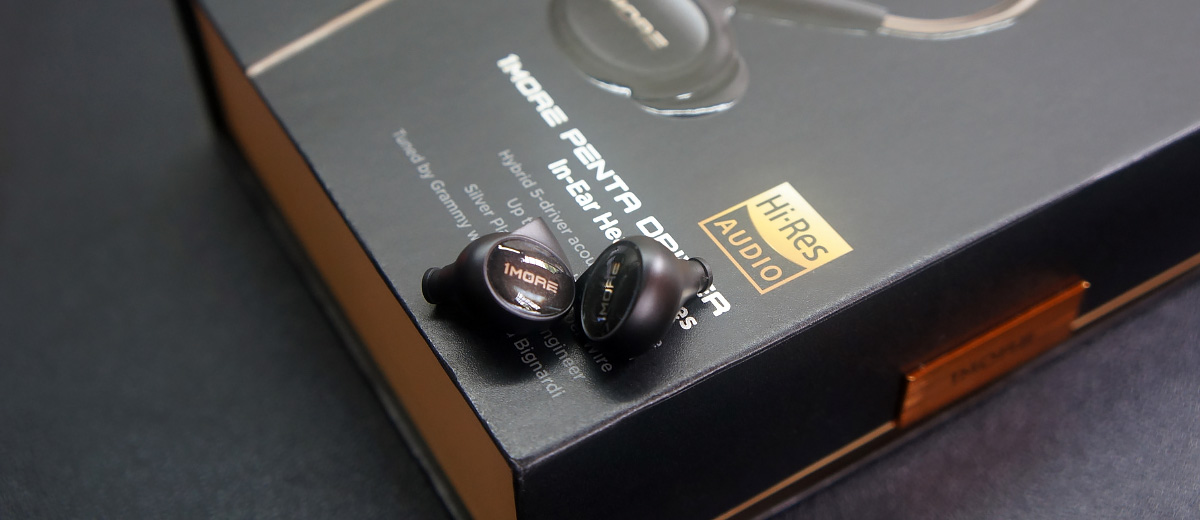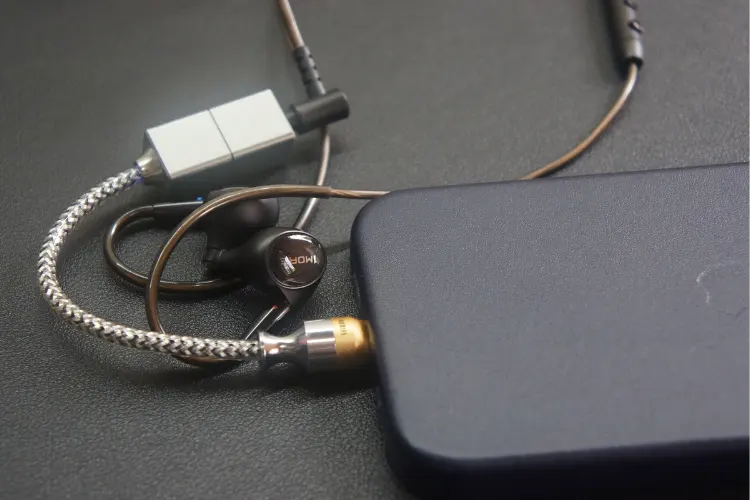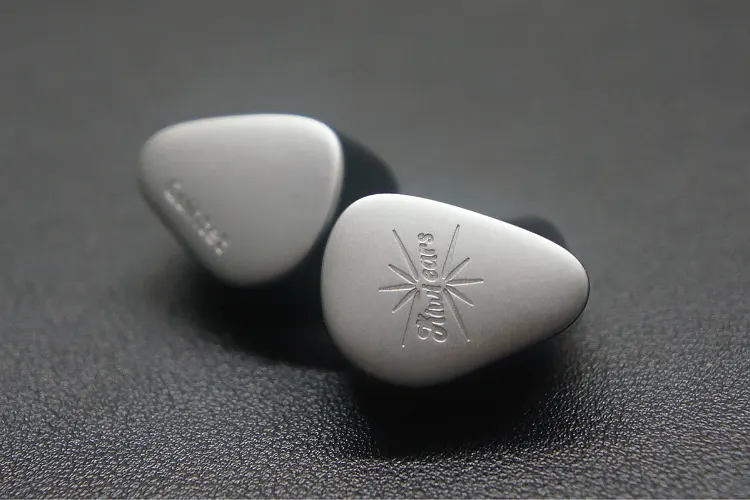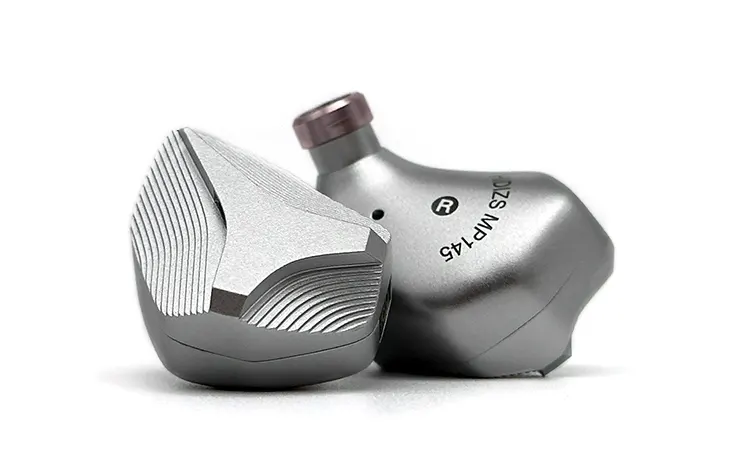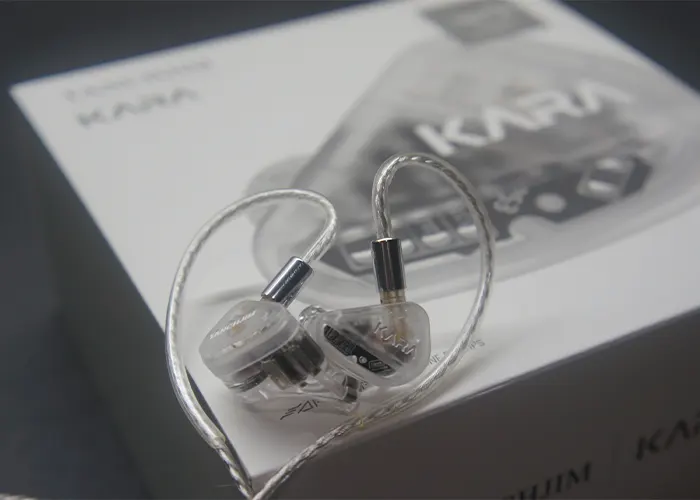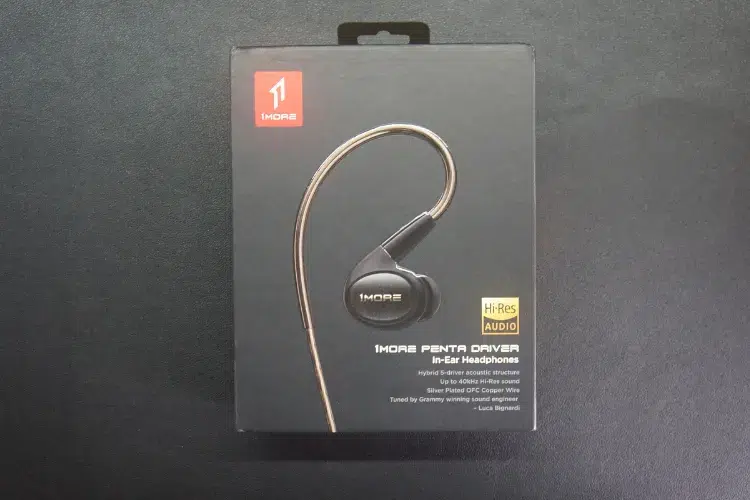Synergy
Efficiency
The P50 has an impedance of 32Ω and a sensitivity of 105 dB/mW, making it not that hard to drive. The IEMs can be powered by most sources, such as a laptop and even the integrated dongle DAC.
When trying out the P50 with more powerful desktop equipment such as my Topping L30 II, I did not notice any sonic differences as opposed to listening to it via the included dongle.
In my testing, my daily driver ddHiFi TC35Pro Eye2 lightning dongle sufficiently drove the P50 while maintaining the same resolving and fidelity of running the P50 with the included dongle or my L30 II.
Pairings
I found that the P50 paired well with a more neutral dongle DAC such as the one that came with it out of the box.
This dongle maintains the V-shaped tonality of the P50 while ensuring that the inherent comfort benefits of the earbuds can be maximized with on-the-go listening.
In my testing, I found that the ddHiFi TC35Pro Eye2 checked the boxes I needed as an iPhone user since the dongle itself is similarly warm and didn’t add any unwanted coloration to the already V-shaped sound signature of the IEMs.
Unfortunately, it did not pass through volume controls and microphone input like the included USB-C dongle.
Whenever I was using my iPad or my desktop computer, I consistently found myself pairing the P50 with the included dongle DAC. The fact that it passed through volume control and the microphone made it perfect for office use and online video conferencing.
Select Comparisons
Kiwi Ears Quintet
Technical
The Kiwi Ears Quintet is also a 5-driver hybrid with one 10mm diamond-like carbon (DLC) dynamic driver, two Knowles balanced armature (BA) drivers, a micro planar magnetic driver (MPT), and a piezoelectric (PZT) bone conductor driver. The P50 houses one DLC dynamic driver and four planar magnetic drivers.
The Quintet has an impedance of 32Ω and a sensitivity of 108 dB/mw, while the P50 has an impedance of 32Ω and a sensitivity of 105 dB/mw, making the Quintet easier to drive in practice.
Design
The Quintet makes use of a resin shell with a glossy black opaque finish and a separate CNC-machined aluminum metal faceplate.
In comparison, the 1MORE P50 makes use of a more subdued design aesthetic, focusing on matte plastics that offer subtle visual flair. The use of plastic instead of CNC Machined Aluminum faceplate also makes it more durable, comfortable, lighter, and all-around better for day-to-day use.
Performance
The Quintet has a sharper V-shaped sound signature, whilst the P50 has a warm low-end emphasis and a sharper emphasis on the upper treble region.
The Quintet has a stronger and deeper mid-bass performance with kick drums being played back in a rich textured nature, making them easy to place within space.
However, sub-bass tones, such as synths and deep groans in atmospheric trap music are given better emphasis on the P50. This gives the P50 a warmer, more enveloping bass presentation that resonates throughout the entire soundstage.
Male and Female vocals have more body on the P50. Acoustic tracks that emphasize the vocal prowess of the singer are a treat on the P50 when compared to the Quintet, with minute pitch changes and moments of emotion being played back with more intimacy.
Being a V-shaped IEM, the Quintet’s ability to reproduce accurate string instruments in the mid-range was sub-par compared to the P50. Individual guitar strums and piano keys had more weight through the P50.
In the upper treble region, I found that the P50 had struggled playing back multiple types of cymbals at the same time, while also coming off as sibilant in the process.
In comparison, the Quintet excelled in maximizing cymbal and chime resolution, whilst expertly walking the line between exciting treble energy and sibilance
Hidizs MP145
Technical
The Hidizs MP145 makes use of a single 14.5mm planar magnetic driver with an of 30Ω and 104 dB/mW SPL.
The P50 houses one DLC dynamic driver and four planar magnetic drivers in a 5-driver hybrid array. It has an impedance of 32Ω and a sensitivity of 105 dB/mW, making it a close match in terms of load and sensitivity when compared to the MP145.
Design
The Hidizs MP145 design is an aluminum shell with an ergonomic whale-inspired aesthetic. The geometric shapes of the MP145 make it visually stand out, especially with the metallic finish of the shell material used.
In contrast, the professional-looking matte black plastic shell of the P50 is much more subdued and subtle. When in-ear, the P50 never gathers any attention. The use of a plastic shell also makes the P50 much lighter and more comfortable than the MP145 in day-to-day usage.
Performance
The MP145 has a more prominent V-shaped sound signature, while the P50 has a warm low-end emphasis and a sharper emphasis on the upper treble region.
The MP145 presents bass drum hits with more authority, punch, and texture. Through the MP145, each bass drum strike stands out from the other lower-frequency tones in the mix.
The P50, in comparison, is less proficient in playing back individual kick drum hits in the sub-bass but excels in presenting background synths and drawn-out background layers in the mid-bass region in a way that is thicker and more relaxing.
Both male and female vocals are presented with more emphasis and a more natural tonality through the P50, however, they are more resolving on the MP145.
Instruments in the mid-range are presented with significantly better resolution through the MP145. Despite the P50 and its warmer sound signature placing more mid-range emphasis, the difference in resolution makes the mid-range on the MP145 more engaging.
The holographic imaging of the MP145 outclasses that of the P50, so it is a more engaging and technically impressive presentation of the mid-range, despite the tonal emphasis the P50 places on vocals and the lower mid-range.
Despite having more energy and sparkle in the treble range, the P50 was technically less proficient than the MP145.
In simpler acoustic arrangements, the P50 can sufficiently playback the decay in crash cymbals or the continuous strikes in hi-hats. However, in more complex chimes and cymbal arrangements, the P50 tends to fall flat.
The treble presentation of the MP145 does not demand as much attention, however, it handles complex arrangements of cymbals and chimes with ease, with enough resolving capabilities to make each component of a complicated mix easily identifiable.
Tanchjim Kara
Technical
Although the Kara is also a 5-driver configuration it uses a more familiar single dynamic driver and 4 Balanced Armature drivers. Whereas the P50 houses a more unique setup of a DLC dynamic driver and four planar magnetic drivers.
The Kara has an impedance of 27Ω and a sensitivity of 115 dB/mW, while the P50 has an impedance of 32Ω and a sensitivity of 105 dB/mW. However, in practice, the 1MORE was easier to drive to a listenable volume.
Design
The Kara, like most IEMs in the price range, makes use of a resin shell with a separate translucent plastic faceplate. This gives it a striking appearance and throughout my time testing the Kara, there were multiple times where my friends and acquaintances stopped me to ask what I was listening to.
While the professional “studio grade” appearance of the P50’s matte black plastic makes it much more under the radar in comparison.
When in-ear, the P50 never gathers any attention. With both IEMs using plastic shells, the smaller and more ergonomic design of the P50 makes it much more comfortable than the Kara for everyday use.
The Kara is not uncomfortable, with its shell being smaller than most Chi-Fi IEMs in the price range. Rather, the shell shape and contours of the P50 are simply more comfortable.
Performance
The Kara has a more neutral sound signature, whilst the P50 has a warm low-end emphasis and a sharper emphasis on the upper treble region.
The P50 has a stronger, deeper bass performance. The P50 is superior in both bass quantity and quality, presenting bass drums with more texture and chest-rumbling authority.
In pop tracks, I noticed that the Kara removed significant emphasis from the bass region as if it was sucking energy and engagement from pop tracks that were meant to be fun and engaging.
The Kara has a more intimate presentation with the vocals, be they male or female, always the star of the show. However, for most music, I found myself preferring the more balanced mid-range presentation of the P50.
The P50 presented treble with more energy, sparkle, and fidelity across the board. The Kara’s treble almost sounds dull in comparison.
Mind you, the Kara was still more proficient than the P50 in the ability to play back complex multi-cymbal arrangements without losing the resolving capability to make each cymbal easily differentiable. In addition to this, the P50 tends to sound more sibilant than the Kara.
Our Verdict
The 1MORE Penta Driver P50 is a decent set of multi-driver IEMs for those looking for an inoffensive, relaxing sound signature for daily use at an affordable price.
Its design, comfort, and inclusions can be a mixed bag with a potential deal breaker. The ergonomic shape in conjunction with its light matte-black plastic, in-line microphone, and pass-through capable dongle would have made it a perfect everyday IEM
However, the low-tolerance rotating MMCX connector was too much drawback for me to even consider using it daily, making it difficult to recommend without demoing it first.
The P50 is by no means perfect, but if your daily routine can benefit from the relaxing tonality and comfortable shape of the P50 while ignoring the on-the-go comfort compromises, it does provide some good value.
1MORE Penta Driver P50 Technical Specifications
- Driver Type: DLC DD + 4 Planar Drivers
- Plug: 3.5mm SE
- Frequency Response: 20Hz-40kHz
- Impedance: 32Ω
- Sensitivity: 105 dB/mW

